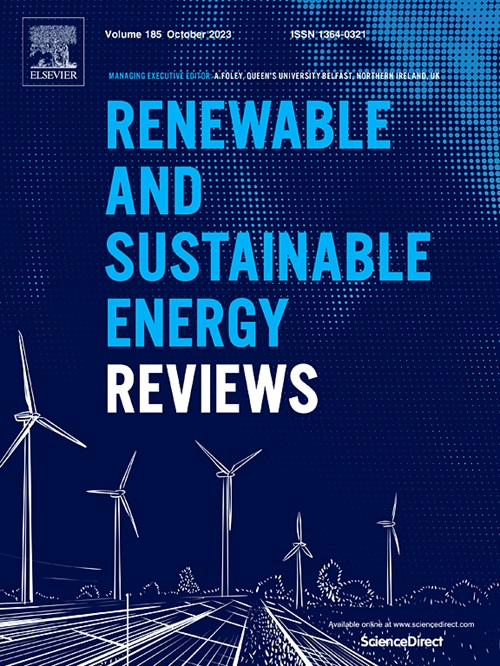Solar photovoltaic cooling and power enhancement systems: A review
IF 16.3
1区 工程技术
Q1 ENERGY & FUELS
引用次数: 0
Abstract
The development of an efficient photovoltaic system could play a vital role in achieving Sustainable Development Goals and the global Net Zero emission target. However, the operation of photovoltaic is reliant on its operating temperatures, causing a substantial drop in the system's energy performance. Various photovoltaic cooling and power enhancement studies have been reviewed with the aim of offering insight into advancements in photovoltaic performance enhancement systems. However, they have yet to discuss both topics comprehensively in a review study. These fragmented studies may lead to a gap in knowledge and information for devising effective photovoltaic performance enhancement strategies. Therefore, this review is a thorough attempt to consolidate the recent advances in photovoltaic performance enhancement systems. The current advancements in cooling approaches were reviewed by classifying them into conductive, convective, and radiative cooling systems. The application of thermoelectric generators and phase change material was highlighted in photovoltaic power enhancement systems. The performance comparison showed that the cooling systems with nanofluid provided the most significant cooling effect, reducing the operating temperature up to 40.4 °C. Meanwhile, integrating phase change material underneath the thermoelectric generator performed the most significant energy enhancement by up to 1.67 %. Some key technical barriers and economic aspects were examined as guidance in advancing photovoltaic cooling and power enhancement systems. Limitations of the review were also outlined, and future prospects were concluded.
求助全文
约1分钟内获得全文
求助全文
来源期刊

Renewable and Sustainable Energy Reviews
工程技术-能源与燃料
CiteScore
31.20
自引率
5.70%
发文量
1055
审稿时长
62 days
期刊介绍:
The mission of Renewable and Sustainable Energy Reviews is to disseminate the most compelling and pertinent critical insights in renewable and sustainable energy, fostering collaboration among the research community, private sector, and policy and decision makers. The journal aims to exchange challenges, solutions, innovative concepts, and technologies, contributing to sustainable development, the transition to a low-carbon future, and the attainment of emissions targets outlined by the United Nations Framework Convention on Climate Change.
Renewable and Sustainable Energy Reviews publishes a diverse range of content, including review papers, original research, case studies, and analyses of new technologies, all featuring a substantial review component such as critique, comparison, or analysis. Introducing a distinctive paper type, Expert Insights, the journal presents commissioned mini-reviews authored by field leaders, addressing topics of significant interest. Case studies undergo consideration only if they showcase the work's applicability to other regions or contribute valuable insights to the broader field of renewable and sustainable energy. Notably, a bibliographic or literature review lacking critical analysis is deemed unsuitable for publication.
 求助内容:
求助内容: 应助结果提醒方式:
应助结果提醒方式:


